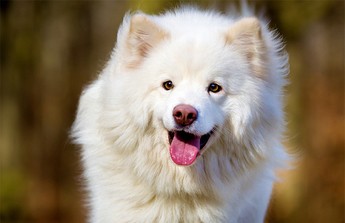The Samoyed is considered to be the breed that has the highest degree of relation to primitive dogs as this breed has no wolf or fox blood in its ancestry. The Samoyed was developed in Siberia, possibly over a thousand years ago, where they were used as sled pulling, working, and hunting dogs.
The Samoyed is one of fourteen breeds identified as ancient through DNA analysis of the canine genome. They give us a good picture of what some of the earliest dogs probably looked like.
In more modern times, Samoyeds took part in Arctic and Antarctic explorations of Nansen, Shackleton, Scott, and Amundsen. Britain’s Queen Alexandra, the wife of Edward VII, loved the breed, and many of her dogs appear in the pedigrees of English and American Samoyeds today.
The American Kennel Club recognized the Samoyed in 1906. Today he ranks 72nd among the breeds registered by the AKC.










